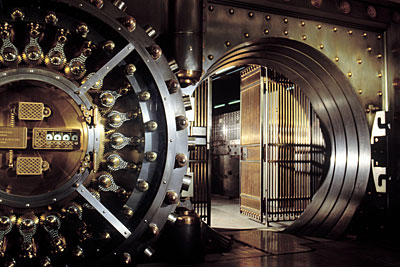Integrated Security Subsystems
Feedsee Security : Integrated Security Subsystems : Development and deployment of subsystems consisting of multiple interrelated technologies
 In 2006, ICx formed a division to develop and deploy subsystems consisting of multiple, interrelated security technologies. The division drew on the company's full family of detection and surveillance products, including thermal cameras, long and short-range radar, and chemical, biological, radiological, nuclear, and explosive detectors. The company's surveillance products distinguished people and objects invisible to human senses and conventional cameras. Its software and systems connected, commanded, and controlled these security devices.
In 2006, ICx formed a division to develop and deploy subsystems consisting of multiple, interrelated security technologies. The division drew on the company's full family of detection and surveillance products, including thermal cameras, long and short-range radar, and chemical, biological, radiological, nuclear, and explosive detectors. The company's surveillance products distinguished people and objects invisible to human senses and conventional cameras. Its software and systems connected, commanded, and controlled these security devices.
Thermal cameras, long and short-range radar, and chemical, biological, radiological, nuclear, and explosive (CBRNE) detectors are each effective tools in their own right for identifying and responding to potential threats. However, when used together, these technologies can form a powerful, layered defense system. Here's how these components can be integrated:
- Thermal Cameras: Thermal cameras detect infrared radiation (heat) emitted by objects and people. This allows them to 'see' in darkness, through smoke, and in other conditions where standard cameras would fail. They are valuable in early threat detection, as they can identify people and vehicles in places where they shouldn't be, especially in low-visibility conditions.
- Long and Short-Range Radar: Radar systems can detect the presence, direction, distance, and speed of objects such as aircraft, ships, or other vehicles. Long-range radar can be used for early detection of potential threats from far distances, while short-range radar provides more detailed data when the object is closer. By combining the two, operators get a more comprehensive understanding of what's approaching and can respond accordingly.
- CBRNE Detectors: These specialized sensors can identify the presence of chemical, biological, radiological, nuclear, and explosive threats. They're used in areas where there's a risk of such threats, including airports, city centers, and other high-risk areas. If a threat is detected, prompt action can be taken to contain the situation and mitigate the risks.
Combining these technologies into a single system provides a comprehensive threat detection and response mechanism. For example, long-range radar might detect an approaching aircraft that isn't responding to communications. As it gets closer, short-range radar and thermal cameras can give more detailed information about the aircraft. If it lands or crashes, CBRNE detectors can then be used to check for dangerous substances.
Such a system requires a robust command and control infrastructure to integrate the data from these different components and to coordinate the response to any detected threats. Advanced algorithms and artificial intelligence are often used to analyze the data from these systems, identify patterns, and alert operators to potential threats.